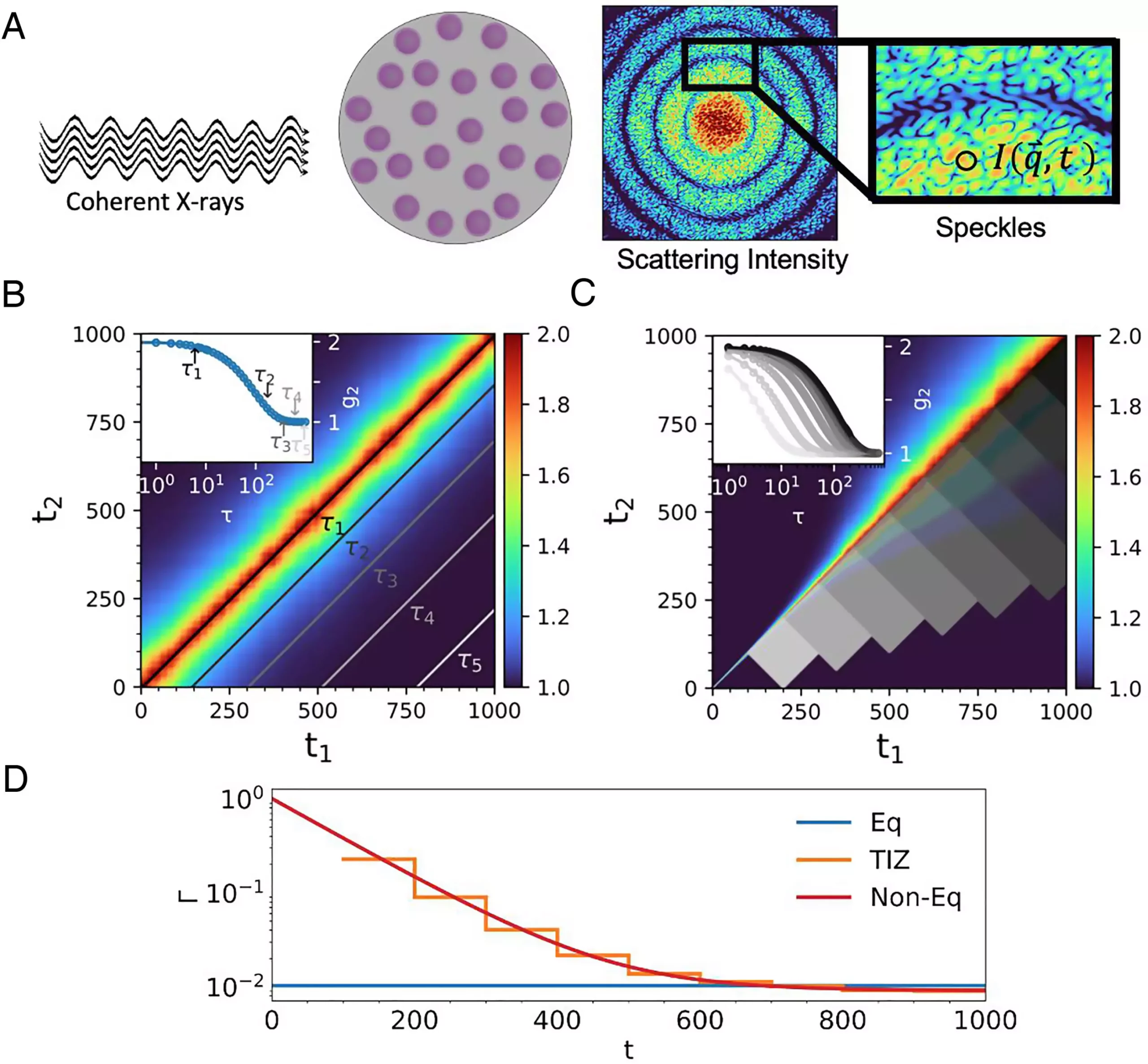The enchanting world of children’s play often revolves around malleable substances like Play-Doh, a vibrant emblem of creativity that has delighted youngsters for over 70 years. However, beyond their playful nature lies a complex science enveloping soft matter—a category encompassing everyday materials such as mayonnaise, 3D printing gels, and even paints. Recently, researchers at the U.S. Department of Energy’s Argonne National Laboratory and the Pritzker School of Molecular Engineering at the University of Chicago have revealed significant advancements in understanding how these materials behave at the atomic level, particularly their flow properties. This breakthrough holds immense promise for multiple applications, illuminating the intricate dynamics of soft matter.
Soft matter is defined by its ability to easily deform in response to external stimuli—be it physical forces, temperature variations, or chemical reactions. This property is finely tuned in a variety of applications, yet often remains poorly understood. For instance, when paint is spread on a wall, complex flows at the nanoscale occur, necessitating immobilization once the application is stopped to avoid drips. “The need for precise understanding in such scenarios is crucial for various industries,” explains Matthew Tirrell, a senior advisor and scientist instrumental in this research.
As the lead author HongRui He notes, the team’s innovative approach allows them to characterize the fluttering movements of nanoparticles under different conditions, a task that previously posed significant challenges to scientists. This newfound ability to observe the behavior of nanoparticles under specific stimuli—the factors influencing their movement and interactions—could open the door to enhanced applications and innovations.
At the heart of this groundbreaking research lies an advanced methodology known as X-ray photon correlation spectroscopy (XPCS). Traditional XPCS techniques required averaging the collected data, a process that often obscured critical details surrounding the intricate behavior of soft matter at the nanoscale. The Argonne team’s refined method resonates with precision, allowing for the extraction of essential parameters, such as the transport coefficient—a pivotal factor in understanding how materials flow over time.
“We are now capable of determining how soft matter behaves almost in real-time,” explains physicist Suresh Narayanan, highlighting how this method enhances the analytical capabilities within the realm of soft matter investigation. The research blended theoretical constructs with practical experimentation, utilizing the Advanced Photon Source, a premier facility known for its intense X-ray beams that reveal material disorders over time.
The researchers employed their enhanced XPCS method on a complex soft material comprised of a dense mixture of spherical charged particles immersed in a salt solution. The application of shearing—the act of spreading a thick lotion, as Narayanan describes—triggered observable changes within the solution’s flow dynamics.
The results of their experiment were noteworthy: they identified three distinct bands of nanoparticles, each with varying speeds—rapid, slow, and stationary. As the interactions progressed, the fast-moving group dissipated only to reappear later alongside the slow and static particles. Such observations provide an unprecedented window into how nanoparticles modify their behavior over time—findings that existing methodologies had previously failed to uncover.
Future Implications and Research Prospects
The implications of this research are substantial, extending beyond academic inquiry into practical applications that may impact everyday life, including predicting geological events like landslides or designing more effective drug delivery systems. As Narayanan highlights, the upcoming upgrade to the Advanced Photon Source promises even brighter X-ray beams, further elevating the study of soft matter with improved experimental capabilities.
Scheduled to commence later in 2024, this advancement will create dedicated beamlines specifically for XPCS research, enabling an array of new experiments to unfold. As scientists continue to delve deeper into the chaotic yet fascinating domain of soft matter, the potential for revolutionary discoveries grows, underpinning an era of enhanced understanding and innovation.
As researchers unveil the secrets of soft matter’s flow dynamics, they not only enrich our knowledge but also pave the way for groundbreaking applications that could significantly impact numerous fields. The intersection of playfulness and science in such materials underscores both their importance in our daily lives and the ongoing need for exploration within the scientific community.


Leave a Reply